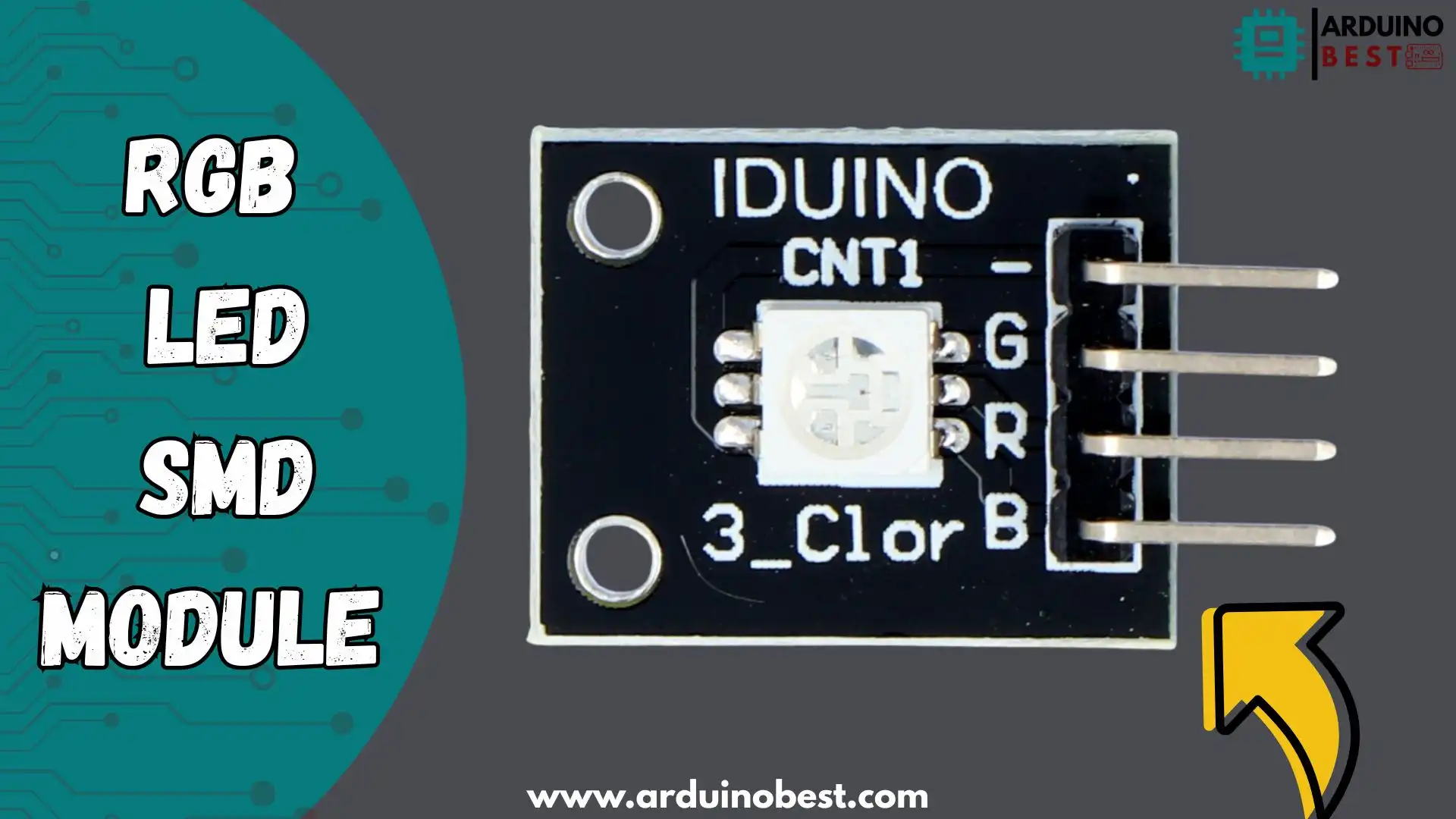Table of Contents
RGB LED SMD (Surface-Mounted Device) modules are becoming increasingly popular in modern electronics due to their versatility, compactness, and high efficiency. Whether you’re building a DIY project, a commercial lighting system, or designing consumer electronics, understanding how these modules work and how to integrate them into your system is essential for success. This article explores the features, applications, and best practices for using RGB LED SMD modules, with insights on how to integrate them into your next project.
What is an RGB LED SMD Module?
An RGB LED SMD module is a compact, energy-efficient lighting component that combines three distinct LEDs—red, green, and blue—into a single package. By varying the intensity of each LED, these modules can produce millions of color combinations, making them perfect for creating dynamic and customizable lighting effects. SMD technology allows these LEDs to be mounted directly on the surface of a printed circuit board (PCB), making the modules compact and ideal for applications where space is limited.
External Link: Learn more about how RGB LEDs work and their applications here.
Key Features and Advantages of RGB LED SMD Modules
RGB LED SMD modules offer several benefits that make them a popular choice in various applications:
- Compact Design: The small size of RGB LED SMD modules makes them suitable for integration into tight spaces.
- High Efficiency: These modules consume less power compared to traditional light bulbs, making them more energy-efficient and cost-effective.
- Customization: By adjusting the intensity of the red, green, and blue LEDs, you can create an almost limitless range of colors for your lighting designs.
- Long Lifespan: RGB LEDs have a long operational life, reducing the need for frequent replacements.
- Flexibility: Available in various sizes, configurations, and with features such as waterproofing, these modules can be used in different environments and projects.
For a deeper dive into the features of SMD technology, check out Surface-Mounted Devices (SMD) basics.
How Do RGB LED SMD Modules Work?
RGB LED SMD modules rely on a technique called color mixing to create a wide range of colors. The basic principle involves combining different intensities of red, green, and blue light. The color perceived by the human eye is the result of this blending process. These LEDs typically work using PWM (Pulse Width Modulation), a method that rapidly switches the LED on and off at a high frequency, controlling the brightness and color output.
- PWM Control: The brightness of each color is controlled by varying the duty cycle of the PWM signal. This allows for smooth transitions between colors.
- Common Anode vs. Common Cathode: RGB LEDs come in two main configurations—common anode and common cathode. The difference lies in how the LEDs are wired, and choosing the right configuration depends on the type of controller used.
You can learn more about how PWM works with LEDs and why it is essential for controlling the brightness of RGB modules in this article on PWM.
Applications of RGB LED SMD Modules
RGB LED SMD modules have a wide array of applications, from consumer gadgets to professional installations. Here are some common uses:
- Advertising Signage: RGB LEDs are widely used in digital billboards and LED displays due to their ability to produce bright, vibrant colors that attract attention.
- Home Automation and Smart Lighting: Used in creating customizable lighting setups, these modules can be controlled via smartphones or smart home assistants like Alexa and Google Assistant.
- Wearable Devices: Wearable electronics like LED clothing, jewelry, or accessories use RGB LEDs for creating dynamic lighting effects.
- Automotive Lighting: RGB LEDs are commonly found in car interiors, tail lights, and headlights for both aesthetic and functional purposes.
- Decorative Lighting: For events, parties, or concert lighting, RGB LEDs provide the flexibility to match any theme with their wide range of colors and brightness settings.
How to Choose the Right RGB LED SMD Module
When selecting an RGB LED SMD module, consider the following factors:
- Size and Form Factor: Choose a module that fits within the constraints of your project. RGB SMD modules are available in various sizes, from small single-chip designs to larger arrays.
- Voltage and Current Specifications: Ensure that the module is compatible with your power supply. RGB LEDs typically operate at 5V or 12V, so check the specifications carefully.
- Brightness and Color Range: Depending on your application, you may need a high-brightness module or one with a wide color spectrum. For large-scale installations, high lumen output is essential.
- Control Compatibility: Make sure the RGB module you choose is compatible with your control system, whether it’s a microcontroller like Arduino or a digital controller for large installations.
Troubleshooting Common Issues with RGB LED SMD Modules
While RGB LED SMD modules are relatively reliable, you may encounter some common issues:
- Dim or Inconsistent Lighting: This may be caused by improper power supply or poor soldering of connections. Always ensure that your voltage and current levels are appropriate for the module.
- Color Mixing Issues: If the colors don’t blend correctly, check your PWM signals and adjust the duty cycle. Faulty wiring or incorrect configuration (common anode vs. common cathode) can also cause issues.
- Overheating: RGB LEDs can get hot, especially when used at high brightness levels for extended periods. Ensure that your setup includes proper heat dissipation, such as heat sinks or active cooling solutions.
How to Integrate RGB LED SMD Modules into Your Projects
Integrating RGB LED SMD modules into your projects involves the following steps:
- Connecting the Module: Wire the RGB LED module to a microcontroller like Arduino or Raspberry Pi. You will typically connect the module’s pins to PWM-capable pins on the microcontroller.
- Controlling the LEDs: Write code to control the brightness of each color using PWM. You can use libraries available for platforms like Arduino to simplify the process.
- Creating Lighting Effects: Once connected, you can create various lighting patterns, such as fading, blinking, and color transitions, to add dynamic visual effects to your project.
Conclusion:
RGB LED SMD modules are incredibly versatile tools for any electronics enthusiast or professional looking to incorporate vibrant lighting effects into their projects. With their compact size, energy efficiency, and ease of integration, they are perfect for everything from home automation to large-scale display systems. Whether you’re a beginner or an expert, understanding how to use these modules and their potential applications can help you unlock new creative possibilities for your next project.
These modules are essential components in modern electronic designs. Their adaptability, ease of use, and cost-effectiveness make them a great choice for any DIY enthusiast or professional looking to add color and dynamic lighting effects to their creations. From creating interactive displays to designing smart home lighting systems, RGB LED SMD modules offer endless potential for innovation. By learning how to interface these modules with microcontrollers like Arduino and Raspberry Pi, you can expand the functionality and visual appeal of your electronics projects, pushing the boundaries of what’s possible with simple lighting solutions.
Arduino Projects:
1- Complete Guide for DHT11/DHT22 Humidity and Temperature Sensor With Arduino
2- DHT11 – Temperature and Humidity Sensor
3- DHT22 – Temperature and Humidity Sensor (more accurate than DHT11)
4- BMP180 – Barometric Pressure and Altitude Sensor
5- BMP280 – Barometric Pressure & Temperature Sensor
6- BME280 – Temperature, Humidity, and Pressure Sensor
7- Arduino Flex Sensor Controlled Robot Hand
8- Arduino ECG Heart Rate Monitor AD8232 Demo
9- Arduino NRF24L01 Wireless Joystick Robot Car
10- Arduino Force Sensor Anti-Theft Alarm System
11- Arduino NRF24L01 Transceiver Controlled Relay Light
12- Arduino Rotary Encoder Controlled LEDs: A Complete Guide

